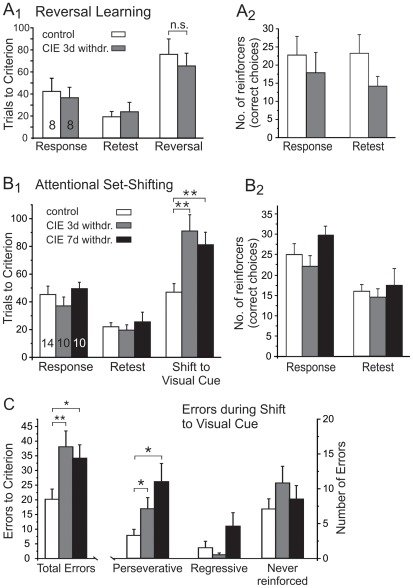Figure 5. Chronic intermittent ethanol (CIE) exposure reduces the ability of mice to shift attention towards previously unrewarded stimuli in order to learn a new response strategy.
A) CIE does not interfere with the ability to reverse a response discrimination in a T-maze. Mice were trained on a response discrimination (Response) that required them to always turn towards one side to obtain food reward. After 3 cycles of CIE or air exposure and 3 days of withdrawal, mice were retested (Retest) using the same turn discrimination. Animals in both groups showed a small improvement in performance on Retest day, indicating that CIE did not impair the retention of the previously learned strategy. On the following day, mice were required to reverse their strategy (Reversal) and turn towards the opposite arm to obtain the reward. The bar graph in A1 shows the total number of trials to criterion on the 3 test days for mice in the control (n = 8) and CIE (n = 8) groups. Data in A2 shows the number of reinforcers earned (i.e. the number of correct choices) during training (Response and Retest Day). No differences were observed between the treatment groups on any test day. B, C) Attentional Set-shifting is impaired in CIE exposed mice. Mice were trained on a response discrimination task as described in A with the addition of a visual cue (Response). After 3 cycles of CIE or air exposure and 3 or 7 days of withdrawal, mice were retested on the Response Discrimination (Retest). On the following day, mice were trained to shift attention to the visual cue to obtain food reward (Shift to Visual Cue). B1) CIE exposed mice required significantly more trials to reach performance criterion on Reversal Day. B2) Changes on Reversal Day were not due to differences in association strength established during training. The number of reinforcers earned (i.e. the number of correct choices) was not different in all treatment groups. C) Analysis of the types of errors committed on Reversal Day revealed that CIE exposed mice made significantly more perseverative errors than mice in the control group. Other types of errors did not differ significantly, indicating that once the new strategy was acquired, the mice had no difficulty in maintaining the new response strategy. All data are expressed as means ± SEM. **p<0.01 and *p<0.05 significantly different from the vehicle control group (ANOVA and post-hoc analysis using unpaired Student's t-tests).

